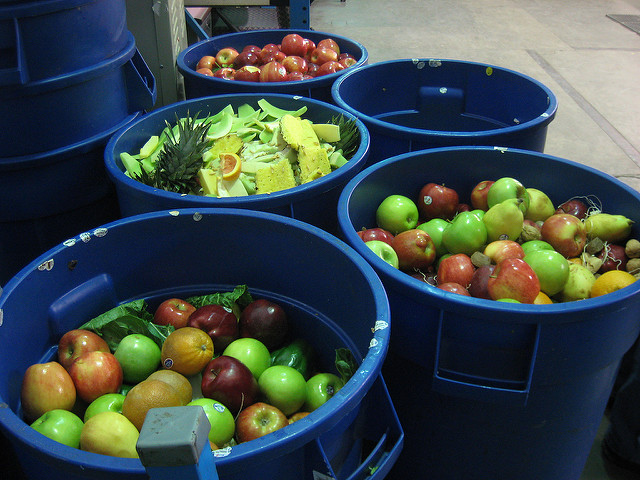
Good Food Gone Bad – Changing Our Appetite for Waste
The Food and Agriculture Organization of the United Nations currently estimates that around a third of all food produced in the world is either lost or disposed of. In total, that amounts to approximately 1.3 billion tons of organic waste produced every year—close to 100 billion dollars in monetary terms. The numbers are truly frightening, highlighting the scale of a problem that has only recently commanded headlines large enough to do it justice.
It is worth noting that, while food waste is a global issue, the numbers are not distributed evenly across nations. For instance, it is estimated that consumers in rich countries waste around the same amount of food as the entire production of sub-Saharan Africa. Additionally, consumers in industrialized nations waste significantly more food per capita than developing nations each year. However, while it may be tempting to put the blame squarely in the corner of the consumer, the lion’s share of the waste is created at production through to retail.
It is clear then, drastic action is required across the entire supply-chain—from farm to table, so to speak. What is less clear, perhaps, is exactly how this will be achieved, particularly in the face of rising populations and the fast-growing food production industry required to fuel them. It is true waste is an inevitable byproduct of industrialized farming, however, changing our appetite for waste also begins at home. Here, we take a look at a few approaches designed to stop food waste at all levels of the supply chain.
Eating Habits
We’ve already given a nod to the farm-to-table movement, and the benefits of locally sourced, seasonal produce are numerous. The shorter transportation distances mean less food is lost along the journey, but direct supply chains also ensure greater efficiency. However, this type of approach can only feed a certain number of mouths, since the economies of scale available to industrial farms are still responsible for fulfilling the bulk of our needs.
What is required is a wholesale reevaluation of our eating habits, expanding our limited diets to include forgotten and out-of-favor foods that rely less heavily on industrial farming practices. Urban foraging is one way in which people are beginning to eat more varied items found in their local area, and fallingfruit.org is a great resource to find and map local sources of food that may otherwise go to waste.
Best Before
There are rising calls for retailers to look more closely at expiration dates on all types of produce. It is a sad fact that, much of the knowledge and experience gained during millennia of farming practice has been replaced by consumerist notions of how long foodstuffs should last. Part of the issue has been an obsession with safety from the retail perspective, and this has translated to consumers dumping lots of perfectly edible food.
Additionally, from the consumer perspective, looking at our fridges with the idea of “what needs to be used” rather than “what would I like to eat” is a simple lifestyle change that ensures less food ends up in the trash. On the plus side, it’s also likely to save you a truck load of money over the course of the year.
Sharing Economies and Donation
The US restaurant industry has a very specific problem when it comes to waste, and it is estimated that around 85% of unused food currently ends up in landfill. This is due to a variety of factors, with health and safety concerns, logistical issues, and high levels of consumer wastage all playing a part. Generally, restaurant owners are keen to solve this complex problem, but barriers still remain.
However, increasingly, donations and sharing economies are stepping in to help solve the problem and ensure unused food from restaurants finds a home. This is particularly important considering the disparities in food distribution across the industrialized world, with food poverty in the US among the highest of the developed nations.
Additionally, retailers are being encouraged to contribute to this growing movement, and in some cases, legislation is being brought in to combat waste. In 2016, France became the first country to adopt this type of law, but it is hoped many others will follow over the coming years. Finally, a few organizations are purchasing b-grade foods (produce that would otherwise be dumped) directly from farmers—providing a valuable service at both ends of the supply-chain.
Naturally, these approaches constitute just a small part of a wider movement to end food waste across the globe. However, as awareness continues to grow, it is hoped greater responsibility from farmers, retailers, and consumers will begin to chip away at the mountains of food waste we create every year. Put simply, we can no longer afford to let good food to go bad.
RESOURCE LINKS:
http://www.fao.org/save-food/resources/keyfindings/en
https://fallingfruit.org
https://www.vice.com/en_au/article/3kyekj/bogus-food-expiration-dates-make-you-waste-food
https://www.usda.gov/media/blog/2015/04/03/farmers-help-fight-food-waste-donating-wholesome-food
Food is waste in American restaurants – How to solve a super-sized problem?
Author bio: This post was written by RTS. RTS is a B-Corp committed to building a more sustainable world. We are an innovative waste management service provider that connects businesses to trash haulers through cutting-edge technologies. In particular, we work with restaurants and grocery stores to correctly process food waste and encourage waste minimization and prevention through LEED accredited training.







Post a comment